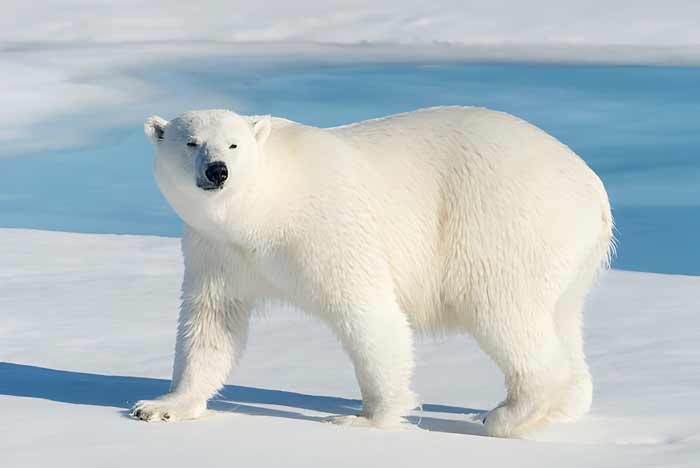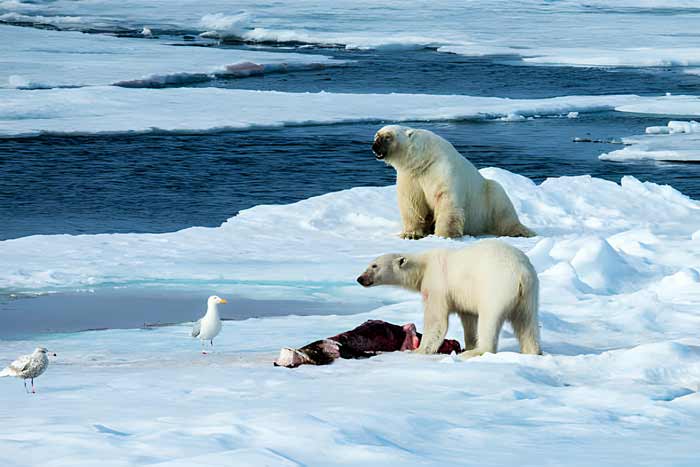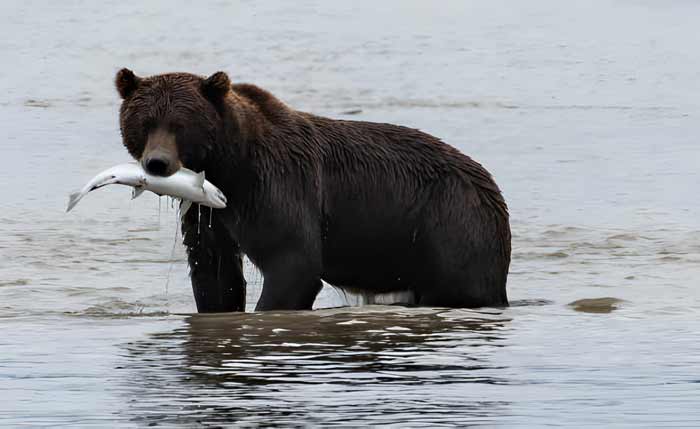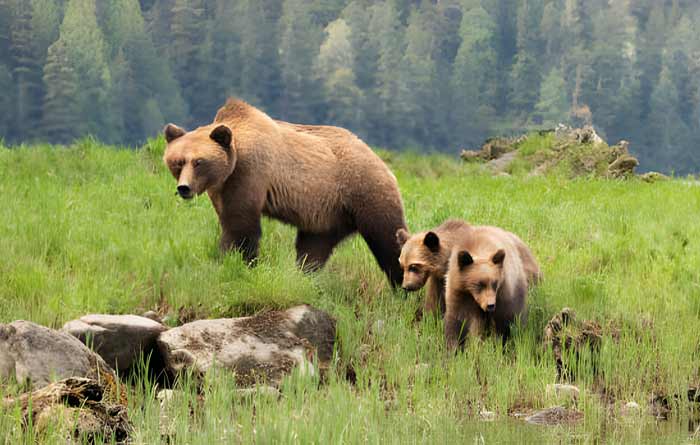In the diverse world of bears, two species often capture our imagination due to their impressive size and distinct characteristics: the polar bear and the grizzly bear.
While they both belong to the bear family, these two species have evolved unique traits and behaviors that suit their respective environments.
This article offers a detailed comparison of polar bears and grizzly bears, exploring their physical attributes, behaviors, diets, and habitats, and speculates on who would win fight?
Differences between Polar Bear and Grizzly Bear
| Polar Bear | Grizzly Bear | |
|---|---|---|
| Size | Up to 10 feet in length | 6.5 to 8 feet in length |
| Weight | 900 to 1,700 pounds | 400 to 850 pounds |
| Habitat | Arctic regions, primarily on sea ice and coastal areas | Forests, alpine meadows, and coastal regions in North America |
| Diet | Primarily carnivorous (seals) | Omnivorous (fish, mammals, roots, berries) |
| Lifespan | Around 20 to 25 years in the wild | Around 20 to 25 years in the wild |
| Hibernation | Do not hibernate but may have reduced activity in extreme conditions | Hibernate during winter months in colder climates |
Polar Bear vs Grizzly Bear: Size

Polar bears stand out as the larger species in the bear family. Adult males typically weigh between 900 to 1,700 pounds and can measure up to 10 feet in length, making them the largest land carnivores.
This size advantage is complemented by their elongated body structure, which is crucial for efficient swimming in the Arctic waters.

In contrast, grizzly bears, though slightly smaller, are still formidable in size. Adult males weigh around 400 to 850 pounds and reach lengths of about 6.5 to 8 feet.
Their build is robust, with a distinctive muscular hump on their shoulders, providing them with the strength necessary for digging and powerful forelimb movements.
Adaptations for Survival
The polar bear’s adaptations are a testament to its Arctic lifestyle. Their thick fur and a substantial layer of blubber provide insulation against the freezing temperatures, while their large, padded paws are designed for efficient movement across ice and snow.
Grizzly bears, adapted to more temperate environments, have strong, long claws ideal for digging up roots or catching fish, and a keen sense of smell that guides them to diverse food sources.
Behavior and Diet

Polar bears are primarily carnivorous, with a diet heavily reliant on seals. Their hunting strategy often involves patiently waiting by seal breathing holes or breaking into seal dens.

Grizzly bears have a more omnivorous diet, consuming fish (notably during salmon runs), mammals, roots, and berries. Their diet varies with the seasons and the availability of food sources.
Social Interaction
In terms of social behavior, both species tend to be solitary.
Polar bears are mostly lone wanderers, except during mating seasons or when mother bears are nurturing their cubs.

Grizzly bears, while also generally solitary, may congregate in areas with abundant food, such as rivers rich in salmon.
Habitat
Polar bears are primarily found in the Arctic Circle, traversing sea ice, coastal areas, and open waters. Their life is intimately tied to the sea ice, which they use as a platform for hunting seals.
Grizzly bears inhabit a range of environments across North America, including forests, alpine meadows, and even coastal areas. They require a habitat that offers both ample food and opportunities for denning.
Lifespan

In the wild, both polar bears and grizzly bears can live for about 20 to 25 years, though this can vary based on factors like food availability, human interaction, and environmental changes.
Their reproductive rates are relatively low, with both species giving birth to small numbers of cubs after extended gestation periods.
Polar Bear vs Grizzly Bear: Who Would Win?
In a theoretical showdown, several factors would come into play.

The polar bear, with its larger size and strength, would have a significant advantage, especially in a cold, snowy environment. Their powerful limbs and endurance in swimming could be decisive.
The grizzly bear, on the other hand, could leverage its aggressiveness, powerful claws, and agility, particularly in a forested or mountainous terrain where it can maneuver more effectively.
Conclusion
The comparison between polar bears and grizzly bears reveals fascinating aspects of these two iconic bear species. Each has adapted brilliantly to their environment, showcasing nature’s incredible diversity.
While the idea of a confrontation between them is intriguing, it’s important to remember the real challenges these species face, such as habitat loss and climate change.
Understanding and appreciating their differences underscores the importance of conservation efforts to protect these magnificent animals and their natural habitats.
FAQs
Polar bears are larger, with males reaching up to 15 feet in length and weighing between 900 to 1,600 pounds. Grizzly bears are smaller, with lengths of 6.5 to 8 feet and weights around 400 to 790 pounds. Polar bears have a white coat and are adapted to the Arctic, while grizzlies have brown fur and live in forests and mountainous regions.
Polar bears are found in the Arctic Circle, primarily on sea ice and coastal areas. Grizzly bears inhabit various environments across North America, including forests, alpine meadows, and coastal regions.
Polar bears are excellent swimmers and can cover long distances in water. Grizzly bears can swim but are not as adapted to aquatic environments as polar bears.
In a hypothetical battle, the outcome would depend on various factors like environment and size. Polar bears have a size advantage, but grizzly bears are known for their strength and aggressiveness.
Polar bears do not hibernate but may enter a state of reduced activity in extreme conditions. Grizzly bears hibernate during the winter months in colder climates.
Both species can be aggressive, especially when threatened. However, grizzly bears are known for their territorial behavior and can be more aggressive towards humans.



